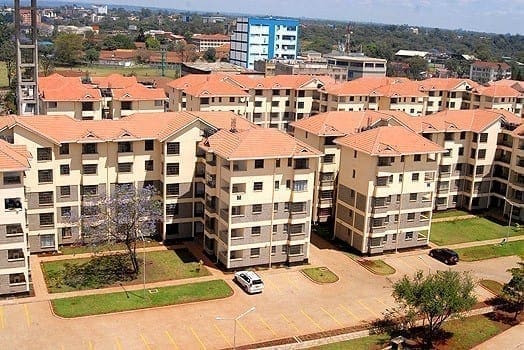
Some years back, the World Bank studied Kenyan home ownership trends and the consequences of its now long-term property race.
The results were startling, but the one thing that worried the international lender the most was the lack of access to financing options by the middle class.
Home ownership, the study found out, was still the preserve of the elite, the monied folks with millions lying idle in their fat bank accounts.
These people, however, needed no loans to put up their glistening castles, and that meant that lenders offering mortgage facilities were barking up the wrong tree. The market had the potential to grow, but with minimal bank input, it was stuck at the foundation level.
Then the 2000s happened, a property race ensued and keen-eyed developers saw the opportunity to mint millions. In Nairobi, semi-detached town houses sprang from the earth overnight, changing the horizons of entire suburbs in a matter of months.
Pundits said the industry had finally come of age, that the banks were about to rise from their slumber, smell the mortar and reduce their lending rates in order to accelerate the growth.
They were mistaken.
The lenders held onto their high rates, stifling a market that exhibited immense potential. By close of last year, commercial banks were still holding onto high rates, resulting in low uptake and scant funds to lend. And, even though mortgage rates were stable in the fourth quarter, with rises only on the expiry of the third quarter’s promotional offers from Barclays and CFC Stanbic banks, a lot of people were still disinterested in their products.
The average mortgage rate for Quarter IV last year, according to The Mortgage Report, was 16.89 per cent. Standard Chartered Bank continues to offer the most competitive interest rate, currently standing at 13.9 per cent.
National Bank of Kenya has revamped its mortgage product, but the rate has remained the same at 15.45 per cent. With the Central Bank of Kenya base rate stable at 8.5 per cent, five Kenyan commercial banks hold on to mortgage rates priced more than nine percentile points above the base rate.
The lenders with a spread of 9.5 to 10.5 percentile points were Equity Bank, Family Bank, Chase Bank, Diamond Trust Bank and Consolidated Bank
“In previous reports, we have focused heavily on the importance of bringing down interest rates to encourage mortgage affordability and penetration in the country,” says Carol Kariuki of The Mortgage Company. “Competitive advantage for industry players will be defined by the ability of financiers to crack some issues that remain unanswered.”
The current closing costs in mortgage transactions, therefore, can be prohibitive to many, especially where savings are in short supply. In countries where home ownership penetration has grown, governments either had to chip in to force savings — as in the famous Singapore model — or create incentives that encourage first-time home buyers through very attractive tax packages, says Ms Kariuki.
Unfortunately, the same does not obtain in Kenya, where, for developers to access incentives, they must show that their projects will not exceed Sh1.6 million. Given the rise in cost of land, construction and the many taxes introduced to the “booming” sector, such prohibitions do little to encourgae home ownership in the country.
So, with most first-time home buyers simply unable to meet the financing costs of mortgages, the sector is now seeing a concentration of the middle classes in town house renting, delivering a surge in rents across the mid-level of the property market, which went up a further 4.5 per cent from October to December 2013, and a 19.4 per cent across the year, says Sakina Hassanali of HassConsult.
And, while many commercial banks have shown interest in availing mortgages to the market, credit assessment remains poor at best, says Ms Kariuki of The Mortgage Company.
Mortgage applications take at least two to four weeks to have the initial indication of financier’s interest. Once this has been provided, meeting the long list of requirements becomes a onerous task that only those with serious determination to see the process through ever complete the draw down process, she says.
Many financiers hold large portfolios of “approved, held pending draw down”, meaning either the completion of the homes remains a challenge, or the customers gave up waiting for approval and found other ways of financing their homes, says Ms Kariuki.
For Small and Medium Enterprises (SMEs), most financiers shy away from even touching their request, and those who do have criteria are so stringent and the rental income so heavily discounted that many give up along the way.
“Notwithstanding, all these people currently live in rental accommodation for which they faithfully pay rent every month-end, posing the question: What is more stable, an employment income (one could lose their job) or rental income for a house that will be there for the next 20 years?”
With increased credit information and the recent enhancements in the sector through Full File Credit Information Sharing (FFCIS), lenders now have a more robust system of assessing credit scores for individuals, “and we challenge financiers to use this to ease the process and enable SMEs access credit more easily”, urges Ms Kariuki.
Automation of credit assessment, as is common in other markets, should alleviate the current challenges where the subjectivity of credit assessment leads to delays in approval of facilities, she adds.
“Many of our financiers are very excited when receiving credit applications, but thereafter, the customer is taken through a long, protracted process to provide documentation, which seems as though the financier disapproves everything that the customer says…. When, finally, the customer gets the facility, the security perfection process is long and delayed,” she adds.
In a nutshell, then, the current funding model does not lend itself to enhancing growth of the industry. All financiers use their balance sheets, hold the mortgages in their books, and use short-term funding to finance mortgages.
The development of the secondary mortgage market has been spoken about many times, but cannot be overemphasised. To begin with, it will reduce the cost of funding for the industry, therefore allowing more people access to mortgage financing.
Source-nation.co.ke
Thinking of Investing in a House? The Pros and Cons
Thinking of Investing in a House? The Pros and Cons
Thinking of Investing in a House? The Pros and Cons
Thinking of Investing in a House? The Pros and Cons







